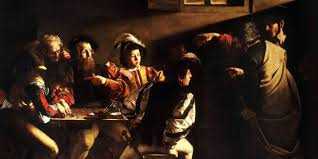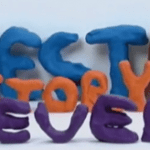Teaching for twenty-five years in an interdisciplinary program with colleagues from a multitude of disciplines has provided me with the best that academe can offer a professor—a continuing education. In an academic world which so often demands narrower and narrower research focus and specialization from its members, it has been a gift to spend the majority of my career thus far at a place that welcomes breadth and encourages—and sometimes requires—its faculty to regularly wander outside their comfort zone in the classroom. I have learned more about history, theology, music, art, and literature through my participation in this program than I could have in any number of graduate courses.

I learned, for instance, about chiaroscuro from the art lectures offered regularly by a colleague from the history department who was frequently a member of my teaching team during my early years in the program. Chiaroscuro is a painting technique that uses strong contrasts between light and dark, bold contrasts that affect the whole composition. Many Renaissance artists used the technique; my colleague’s preferred examples came from the work of Caravaggio. My colleague’s go-to illustration of Caravaggio’s chiaroscuro was “The Calling of Saint Matthew.”
There is some debate concerning who Matthew is in this painting. Is he the guy with the beard pointing at himself (“Who, me?”)? Or is he the young counting money and not paying attention, to whom the guy with the beard is pointing (“Who, him?”)? I prefer the latter interpretation, but there is no debate about the power of light and shadow in this painting. The light shining from a window outside the top right of the canvas illuminates just enough of Jesus’ modest halo to make clear who he is, as well as the expressions on the faces of everyone at the table. But this light also makes the shadows even darker and more pronounced. Light does not dispel the darkness, but it changes everything. This light has transformed the life of the man on whom it is directed—for better and for worse.
According to today’s gospel reading from Matthew, Jesus once said that “my yoke is easy, and my burden is light.” My wife Jeanne told me recently of an “aha!” moment she had not long ago related to this “burden is light” business. She (and probably everyone else aware of the passage and its context) always assumed that Jesus meant that the burden of following him is not heavy—it’s light. And that’s what the Greek text implies as well.
But thanks to the wonders of the English language, this passage can mean something entirely different and much more interesting. What if Jesus means that it is our burden—our duty—to illuminate the darkness, to bring light into a world that badly needs it? What if we read “light” in “my burden is light” as a noun rather than as an adjective? There are all sorts of light-related references attributed to Jesus, including that we are “the light of the world.” And yet Caravaggio and others show us through their skillful use of chiaroscuro that being a light-bearer comes with a built-in price—illuminating the darkness also involves revealing the shadows, both in oneself and in others. Sometimes commitment and faithfulness come with a cost.
Jeanne went on to say that her new reading of “my burden is light” reminded her of an important scene from one of her favorite movies. “Freedom Writers” is the story of Erin Gruwell, played in the movie by Hilary Swank, a young, idealistic teacher in south Los Angeles in the 1990s who finds her enthusiasm and creativity stretched to the breaking point by students divided into gangs along racial lines and an administration who refuses to let Gruwell give the students books to read because the books might be stolen or damaged. Her unorthodox teaching methods incrementally have a positive impact on her students, but there is a price to be paid.
Toward the end of the movie Erin is having dinner with her father and breaks into tears. Her husband has left her, due to her 24/7 dedication to her job and a lack of time for him and their marriage. She sits, weeping, asking her father “Has any of this been worth it? Does it even matter? Have I made any difference?” Her father, who up to this point has been less than supportive of Erin’s commitment, looks at her and says, “You have been blessed with a burden, my daughter. I envy and admire that.”
Jesus told his followers that “You are the light of the world.” Persons of faith are also blessed with a burden—a burden of light. This is not a burden of things to do, actions to perform, positions to take, any more than light considers illumination to be its job. Many centuries ago, Aristotle resonated with this insight when he argued that the moral life is far less about what a person does than it is about that person’s character, about who that person is. Just as light changes everything it comes into contact just by being what it is, so the person of character reveals herself and introduces light into the darkness simply by being, by showing up.
And this is the call to persons of faith. Be there; show up; remember that we have the divine within us. The light may be dim, flickering, all but invisible, but it is the way in which the divine invades the darkness. It doesn’t simply remove darkness; indeed, it reveals new shadows and dark places that could not be seen before the light arrived. But our burden, shadows and all, is to be what we have chosen to be—divine light bearers.












